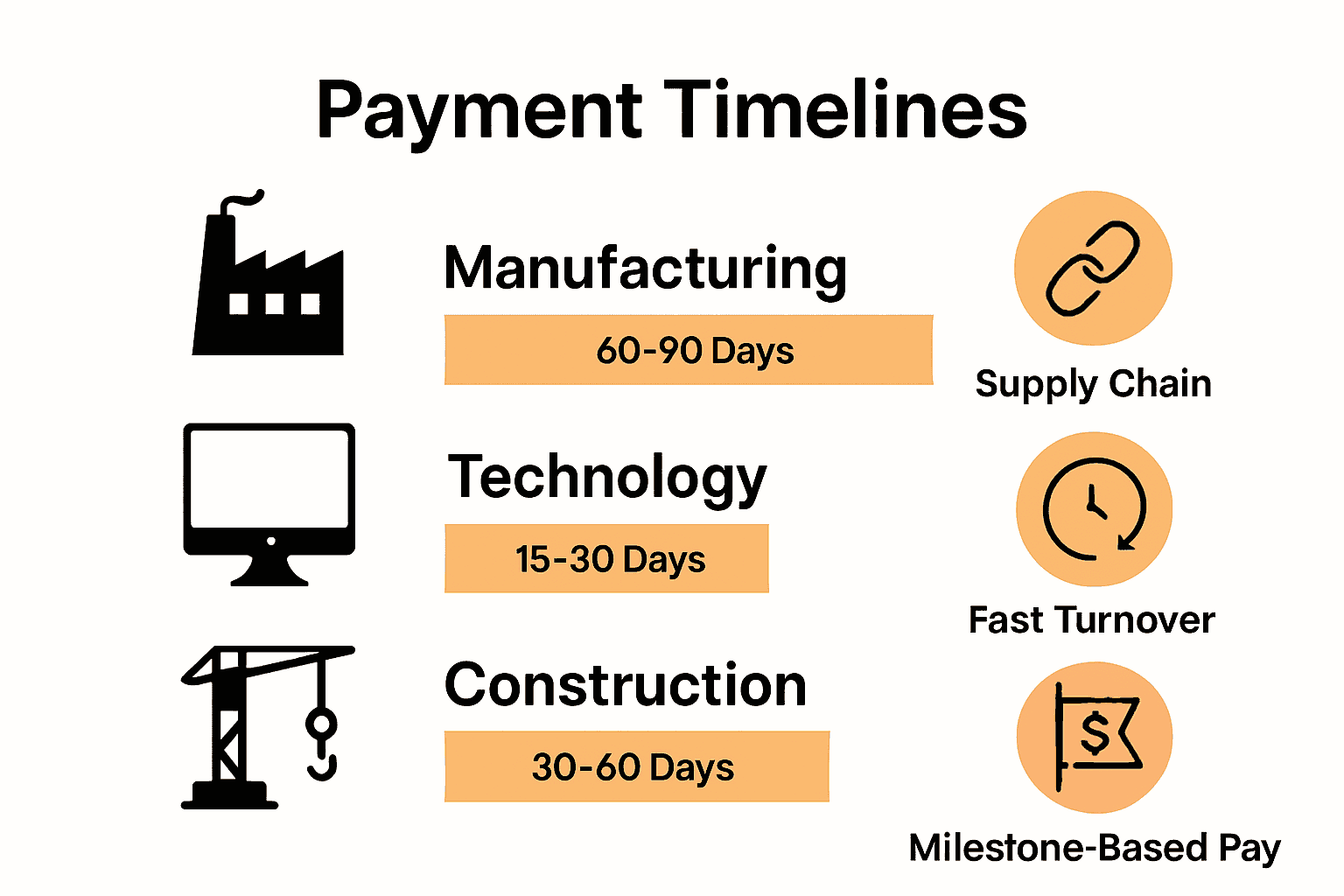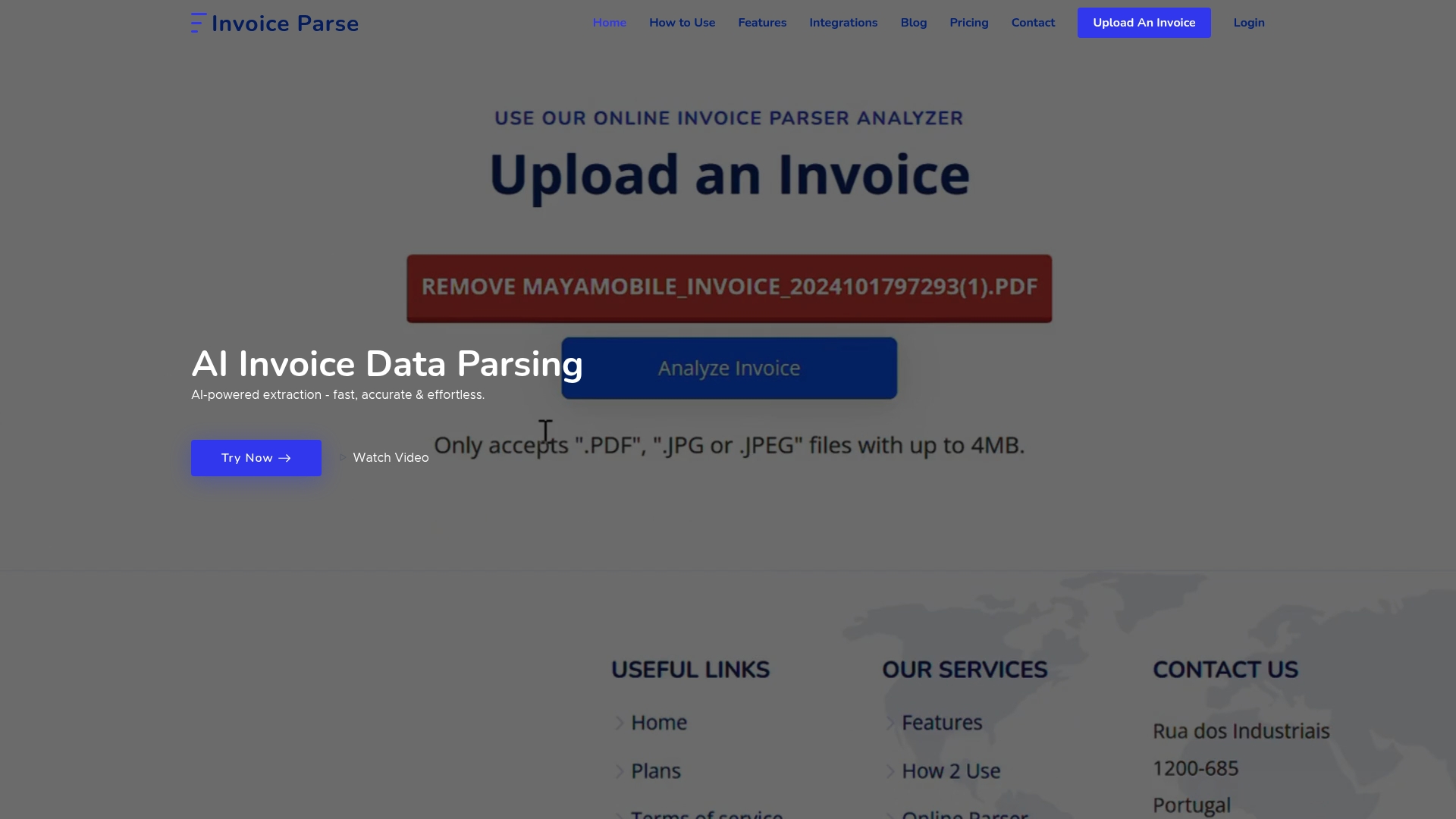Nearly 60 percent of small businesses report cash flow problems due to late payments, creating serious headaches for owners and employees alike. When payments arrive past the agreed date, it is not just a minor inconvenience. These delays can disrupt daily operations, stretch resources thin, and place growth plans on hold. Understanding why late payments happen and how they ripple through a business helps owners take smarter steps to protect their finances and keep relationships strong.

Complete Guide to Reasons for Late Payments
Key Takeaways
| Point | Details |
|---|---|
| Late Payments Disrupt Financial Stability | Late payments can significantly affect cash flow, relationships, and overall financial health of businesses, especially small enterprises. |
| Common Causes | Primary reasons for late payments include cash flow issues, internal processing delays, communication breakdowns, and external economic factors. |
| Sector-Specific Dynamics | Different industries experience unique challenges and payment timelines, necessitating tailored invoicing and payment strategies. |
| Proactive Management Strategies | Implementing clear documentation, automated reminders, and flexible payment options can effectively minimize late payment risks and enhance cash flow. |
Table of Contents
- Defining Late Payments In Business Transactions
- Common Causes Of Late Payment Delays
- Impact Of Late Payments On Businesses
- Sector-Specific Factors Influencing Timeliness
- Effective Strategies To Prevent Late Payments
Defining Late Payments in Business Transactions
In the complex world of business finance, late payments represent more than just a delayed transaction. They are critical disruptions that can significantly impact cash flow, business relationships, and overall financial stability. A late payment occurs when a business or customer fails to remit the full invoice amount by the agreed-upon payment deadline specified in the original contract or invoice terms.
Typically, late payments are characterized by several key indicators:
- Exceeding the standard payment window (usually 30, 45, or 60 days)
- Partial payments that do not cover the total invoice amount
- Consistent delays in meeting financial obligations
- Lack of communication about payment challenges
The consequences of late payments extend far beyond simple inconvenience. They create ripple effects throughout an organization’s financial ecosystem. Small businesses are particularly vulnerable, with delayed payments potentially causing significant strain on working capital, hampering growth opportunities, and creating administrative burdens. Read more about accounts payable terminology to gain deeper insights into these financial dynamics.
Understanding late payments requires a nuanced approach. They aren’t always intentional - sometimes they result from complex invoice processing, miscommunication, temporary cash flow challenges, or administrative errors. Successful businesses develop proactive strategies to minimize late payments, including clear payment terms, automated reminders, flexible payment options, and robust invoicing processes that prioritize transparency and clear communication.
Common Causes of Late Payment Delays
Cash flow challenges represent the most significant driver behind late payment delays in business transactions. Organizations frequently struggle with maintaining consistent financial liquidity, which directly impacts their ability to process invoices and meet payment timelines. Small and medium enterprises are particularly susceptible, often experiencing unpredictable revenue streams that create substantial payment uncertainty.
The root causes of late payments can be categorized into several critical areas:
- Internal Processing Delays: Complex approval workflows, multiple departmental sign-offs, and inefficient accounting systems
- Financial Constraints: Temporary liquidity issues, unexpected expenses, or seasonal revenue fluctuations
- Communication Breakdowns: Unclear invoice terms, disputed charges, or lack of transparent billing documentation
- Technological Limitations: Manual invoice processing, fragmented financial systems, and absence of automated payment tracking
External economic factors also significantly contribute to payment delays. Economic uncertainty, industry-specific challenges, and broader market volatility can create ripple effects that disrupt standard payment cycles. Learn more about invoice data extraction techniques to understand how technological solutions can mitigate these challenges.
Interestingly, late payments are rarely the result of intentional financial misconduct. Most organizations genuinely want to maintain good financial relationships but find themselves constrained by complex operational realities.
 Successful businesses invest in streamlining their financial processes, implementing robust invoice management systems, and developing clear communication protocols to minimize payment delays and maintain healthy vendor relationships.
Successful businesses invest in streamlining their financial processes, implementing robust invoice management systems, and developing clear communication protocols to minimize payment delays and maintain healthy vendor relationships.
Impact of Late Payments on Businesses
Cash flow disruption is the most immediate and devastating consequence of late payments for businesses across all sizes and sectors. When invoices remain unpaid beyond agreed terms, organizations experience significant financial strain that can quickly escalate from a minor inconvenience to a critical operational challenge. The financial ecosystem becomes destabilized, creating a domino effect that impacts everything from day-to-day operational expenses to strategic growth investments.
The multifaceted impacts of late payments manifest in several critical areas:
- Reduced Working Capital: Limited funds available for operational expenses
- Increased Administrative Costs: Additional time and resources spent on tracking and chasing payments
- Strained Vendor Relationships: Potential loss of supplier trust and future collaboration
- Credit Rating Implications: Potential negative effects on business creditworthiness
- Operational Productivity Losses: Management time diverted from core business activities
Explore advanced invoice processing techniques to understand how technological solutions can mitigate these challenges. Small and medium enterprises are particularly vulnerable, with late payments potentially consuming up to 25% of management’s time in financial administration and follow-up activities.
Beyond financial metrics, late payments create profound psychological and strategic challenges. They introduce uncertainty, reduce financial planning predictability, and can erode the fundamental trust that underpins successful business relationships.
Proactive businesses recognize that managing payment cycles is not just a financial task, but a critical component of maintaining a healthy, sustainable business ecosystem. By implementing robust invoicing systems, clear communication protocols, and leveraging technology for efficient payment tracking, organizations can significantly minimize the disruptive potential of late payments.
Sector-Specific Factors Influencing Timeliness
Payment dynamics vary dramatically across different business sectors, reflecting unique economic landscapes, operational challenges, and industry-specific financial structures. Each industry develops its own intricate payment ecosystem, influenced by complex factors ranging from regulatory environments to typical transaction volumes and cash flow patterns.
Key sector-specific payment characteristics include:
- Manufacturing: Extended payment cycles due to large-scale project timelines and complex supply chain dependencies
- Technology: Rapid payment expectations with shorter invoicing windows
- Construction: Milestone-based payments with significant variability in project completion timelines
- Healthcare: Complex insurance and reimbursement processes creating inherent payment delays
- Retail: High transaction volumes with diverse payment method expectations
Learn more about invoice data extraction techniques to understand how technological solutions can adapt to these varied sector requirements. Small businesses within these industries often face unique challenges, with payment timelines ranging from immediate transactions to multi-month settlement periods depending on sector-specific norms.
Here’s a summary of sector-specific payment characteristics:

| Sector | Typical Payment Timeline | Unique Challenges |
|---|---|---|
| Manufacturing | 60-90 days | Long projects Complex supply chains |
| Technology | 15-30 days | Fast turnover Short invoicing windows |
| Construction | Milestone-based Variable |
Delayed milestones Project dependencies |
| Healthcare | 60-120 days | Insurance delays Complex reimbursement |
| Retail | Immediate to 30 days | High volume Multiple payment methods |
The most successful organizations recognize that payment timeliness is not a one-size-fits-all approach. They develop flexible financial strategies that account for sector-specific nuances, leveraging technology, understanding regulatory environments, and maintaining transparent communication channels. By acknowledging these intricate differences, businesses can design more effective invoicing and payment systems that align with their specific industry’s financial rhythms and expectations.
Effective Strategies to Prevent Late Payments
Proactive payment management is the cornerstone of maintaining healthy financial relationships and ensuring consistent cash flow for businesses. Organizations must develop comprehensive strategies that address potential payment delays before they become systemic problems. This approach requires a multifaceted implementation of technological, communication, and financial best practices.
Key strategies for preventing late payments include:
- Clear Invoice Documentation: Create precise, transparent invoices with explicit payment terms
- Automated Reminders: Implement digital notification systems for upcoming and overdue payments
- Flexible Payment Options: Offer multiple payment channels and methods
- Early Payment Incentives: Design discount structures that encourage prompt financial settlements
- Credit Policy Development: Establish rigorous credit assessment protocols for new and existing clients
Learn how to prevent duplicate payments to further streamline your financial processes. Small and medium enterprises can significantly reduce payment delays by leveraging technology that automates invoicing, tracking, and follow-up processes.
Successful payment prevention goes beyond tactical approaches. It requires building a holistic financial culture that prioritizes transparency, communication, and mutual understanding between businesses and their clients. By combining technological solutions with relationship-driven strategies, organizations can create robust systems that minimize late payment risks, preserve vendor relationships, and maintain consistent cash flow dynamics.
Tired of Late Payments Disrupting Your Cash Flow?
Businesses everywhere feel the pressure caused by late payments. The ripple effect can stall your growth, drain your resources, and even strain your client relationships. When slow invoice approvals, manual data entry, and missing payment deadlines become the norm, your team loses precious time and focus. The uncertainty and administrative overhead of chasing late invoices are more than a frustration—they turn into real financial obstacles. Now is the time to transform how you handle invoice data and payment cycles.

Imagine turning those challenges around with just a few clicks. Invoice Parse empowers your team to instantly extract and analyze invoice data using advanced AI—no templates or setup required. Upload invoices in PDF or image format and receive organized data you can use right away with your existing tools. Reduce manual errors, get instant payment clarity, and focus on building strong vendor relationships. Simplify late payment prevention and give your cash flow a boost.
Experience firsthand how automated invoice data extraction can help you stop late payment headaches before they start. Visit Invoice Parse now to streamline your process and accelerate your business’s financial health.
Frequently Asked Questions
What are common causes of late payments in business transactions?
Late payments can arise from several issues including cash flow challenges, internal processing delays, communication breakdowns, and technological limitations. These factors can stem from unpredictable revenue streams or inefficient accounting processes.
How do late payments impact a business’s financial health?
Late payments can severely disrupt cash flow, leading to reduced working capital, increased administrative costs, strained vendor relationships, negative credit rating implications, and even operational productivity losses.
What are effective strategies to prevent late payments?
To prevent late payments, businesses can implement clear invoice documentation, automated reminders for payments due, flexible payment options, early payment incentives, and develop rigorous credit policies for clients.
How do sector-specific factors influence payment timelines?
Different sectors experience varying payment timelines due to unique challenges. For instance, manufacturing often has extended payment cycles due to complex supply chains, while technology sectors may expect quicker payments due to faster transaction turnover. Understanding these nuances helps businesses manage their payment processes effectively.
Recommended
- AI Invoice Parse – How to Prevent Duplicate Payments in 2025: A Step-by-Step Guide
- AI Invoice Parse – How to Invoice With Amount: A Complete Guide (2025)
- AI Invoice Parse – 7 Essential Small Business Finance Tips for Success
- How Do You Create a Payment Plan? - Frego & Associates
- Understanding California Wait Time Penalty
